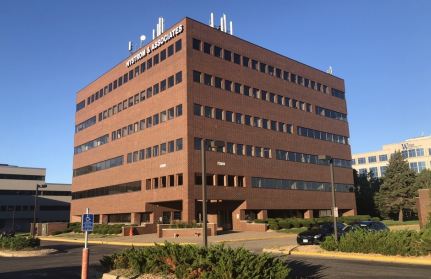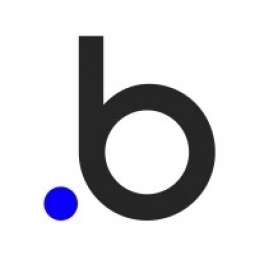技术
- 网络与连接 - NFC
- 平台即服务 (PaaS) - 应用开发平台
适用行业
- 水泥
- 电子商务
用例
- 楼宇自动化与控制
关于客户
PlantSwapper是一款专为植物爱好者设计的社交植物交易应用程序。它为用户提供了一个交换、赠送、出售或展示植物的平台,甚至可以询问植物护理问题。该应用程序还允许用户举办和组织非接触式交换会。用户群主要集中在东南部,但其他地区的活动也在增加。自 alpha 版发布以来,该应用程序出现了显着增长,用户数量每周翻一番。目前,该应用程序在短短三周内就有超过 125 个活跃列表。
挑战
PlantSwapper 创始人 Zeba 和 Nihal 发现了植物交易社区中的一个问题。传统的植物论坛和团体组织混乱,植物命名不一致,导致植物交换者之间为了完成单一交易而进行大量来回。该过程耗时且低效,导致用户很难快速找到好的交易。此外,创始人希望提供一个平台,用户可以在其中举办和组织非接触式互换会议,这在当前的大流行情况下尤其重要。他们需要一个解决方案,让他们能够创建一个用户友好的平台,具有强大的后端功能、第三方集成和本机应用程序。
解决方案
Zeba 和 Nihal 借助无代码平台 Bubble 来创建 PlantSwaper。该平台允许用户发布植物列表,选择类别、品种、贸易类型和植物状况。它还使用户能够创建不同类型的列表,例如“报价”和“需求”。该应用程序的一个独特功能是它的匹配系统,它会向用户显示另一个用户是否有与其“报价”相匹配的“需求”,反之亦然。这使得用户可以轻松快速地找到好的交易。用户还可以举办本地互换会议,并通过应用程序预先决定交易和比赛。 Bubble 的功能使创始人能够直观地开发前端、处理匹配交易的复杂后端查询、管理用户帐户以及与 Google、SendGrid 和 OneSignal 等第三方平台集成。该平台还使他们能够创建一个在移动和网络平台上都能良好运行的解决方案。
运营影响
数量效益

Case Study missing?
Start adding your own!
Register with your work email and create a new case study profile for your business.
相关案例.

Case Study
System 800xA at Indian Cement Plants
Chettinad Cement recognized that further efficiencies could be achieved in its cement manufacturing process. It looked to investing in comprehensive operational and control technologies to manage and derive productivity and energy efficiency gains from the assets on Line 2, their second plant in India.

Case Study
Digital Transformation of Atlanta Grout & Tile: An IoT Case Study
Atlanta Grout & Tile, a Tile, Stone & Grout restoration company based in Woodstock, Georgia, was facing challenges with its traditional business model. Despite steady growth over the years, the company was falling behind the web revolution and missing out on the opportunity to tap into a new consumer base. They were using independent software from different vendors for each of their department information and workforce management. This resulted in a lot of manual work on excel and the need to export/import data between different systems. This not only increased overhead costs but also slowed down their response to clients. The company also had to prepare numerous reports manually and lacked access to customer trends for effective business decision-making.

Case Study
Revolutionizing Construction Equipment Rental: A Case Study on ProsRent and ENO8
ProsRent, a startup that won the 'Best Financial Opportunity' and 'Best Pitch' at CodeLaunch 2016, aimed to revolutionize the way construction professionals source and rent heavy equipment. In the construction industry, project managers and contractors typically rent heavy equipment from supply companies. However, predicting inventory can be challenging, and finding the required equipment at the right time and place can be a hassle. If the preferred vendor doesn't have the required equipment, it results in wasted time and money in searching for it, often leading to higher costs due to non-preferred rates and increased delivery costs if the vendor is located far from the job site. Suppliers, on the other hand, desired access to a wider base of trusted renters that they didn't have to vet themselves and wanted to offer dynamic rental pricing based on demand and availability in their market. ProsRent's challenge was to produce a minimum viable product that was fast and first to market but also strong enough to engender loyalty and repeat business from the target market.

Case Study
IoT Solution Enhances Comfort and Energy Efficiency at Apple Valley Commons Office
Apple Valley Commons, a mixed-use office complex built in 1986, was facing significant comfort and energy efficiency challenges. The building, which houses a variety of businesses, was experiencing extreme temperature imbalances, causing discomfort to employees and clients. Despite outdoor temperatures being consistently high during summers, occupants had to use space heaters to keep warm. The electricity bills from the constant operation of the heat pump were exorbitant. The building's elevator room on the roof was also overheating, reaching temperatures of 130 to 140 degrees, causing the elevator equipment to shut down. The building's existing controls solution did not provide a front end for diagnostics or remote control. The building management was seeking a solution that could address these temperature issues, improve occupant comfort, reduce operational costs, and increase building visibility.

Case Study
Revamping EE's Legacy ERP: A Case Study on BT's Strategic Transformation
EE, even after its merger with BT, was operating its ERP estate on legacy infrastructure, hosted on the premises of a third-party supplier. This outdated system resulted in a volume-based operational model, higher time to market, longer delivery cycles, and unsatisfactory customer experience. BT recognized the need for a strategic transformation of these aging ERP systems and sought a partner who could proactively manage application services. The partner was also expected to handle development requirements associated with application management services, drive accountability, and ownership with a time and target-driven transformation of these services. BT's primary goals were to improve customer experience, reduce cycle time, and measure these improvements with precision.




